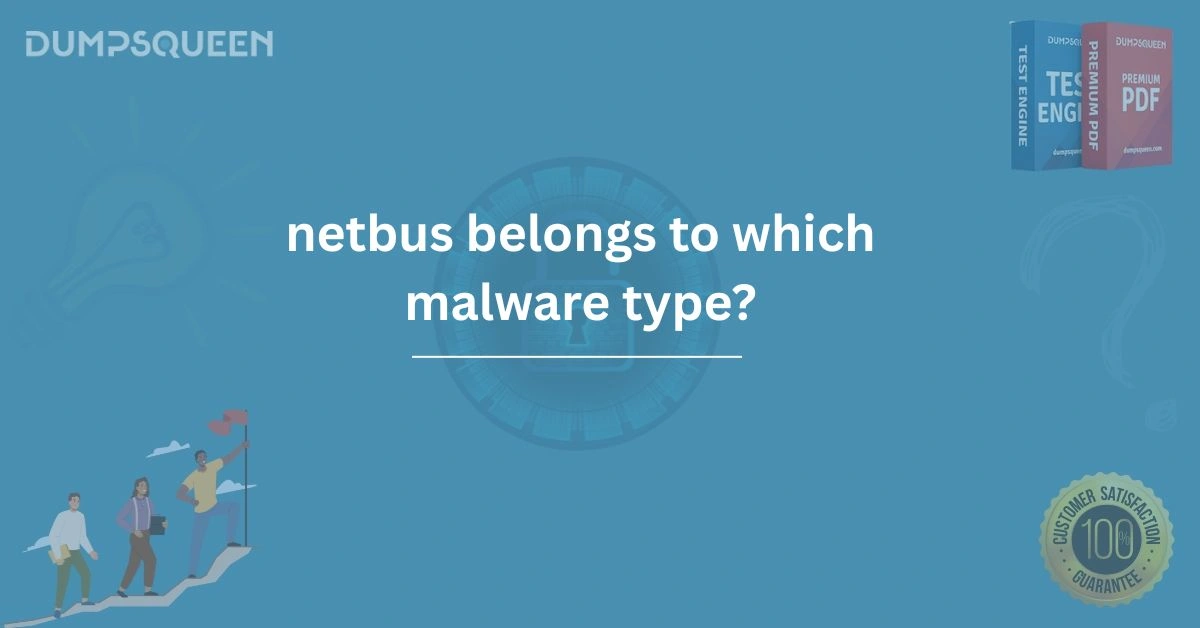Introduction
In the ever-evolving landscape of cybersecurity, malware remains one of the most significant threats to both individuals and organizations. As attackers develop increasingly sophisticated tools, understanding the various types of malware is crucial for network administrators, IT professionals, and anyone involved in maintaining secure computing environments. Among the many malware strains, NetBus stands out due to its historical significance and its role in remote access trojans (RATs). But what exactly is NetBus, and to which category of malware does it belong? This article will delve deep into NetBus, its characteristics, its impact, and how it fits into the broader context of malware types. Understanding this malware is not just about recognizing its behavior but also about learning how to protect against such threats. In this blog, we will explore the following aspects:
-
The definition and characteristics of NetBus
-
The malware type that NetBus belongs to
-
The evolution of remote access trojans (RATs)
-
How NetBus works and how it’s distributed
-
Prevention and protection measures
By the end of this article, readers will have a comprehensive understanding of NetBus, and how to deal with it effectively. Whether you're preparing for certifications like CompTIA Security+, Cisco's CCNA, or other IT security exams, this knowledge will be indispensable in managing network security threats.
What is NetBus?
NetBus is one of the earliest examples of a remote access trojan (RAT), a type of malware designed to allow attackers to take control of a system remotely. Developed in the late 1990s, NetBus was originally marketed as a tool for remote system administration. However, it quickly became infamous as a piece of malicious software used by cybercriminals for unauthorized access to computers. At its core, NetBus enables an attacker to establish a backdoor into the target system, allowing them to control the machine as if they were sitting right in front of it. This means that the attacker can execute commands, steal sensitive information, install additional malicious software, and even use the system’s resources for malicious purposes, such as launching further attacks or stealing personal data. Unlike earlier forms of malware, which typically relied on a user’s direct interaction to spread, NetBus was one of the first pieces of malware that could be installed and activated remotely. It was able to bypass some of the early security measures, making it a popular tool for cybercriminals.
NetBus Belongs to Which Malware Type?
NetBus is categorized as a Remote Access Trojan (RAT). RATs are a class of malware that provide an attacker with full control over a target system, allowing them to remotely perform a wide range of malicious actions. The defining feature of a RAT is that it enables remote control. Once installed on a victim's machine, the RAT provides an attacker with the ability to control that machine from anywhere, often without the victim’s knowledge or consent. In the case of NetBus, the software allows cybercriminals to execute commands remotely, access confidential files, and even turn on a computer’s camera or microphone to spy on the user.

How Does NetBus Work?
NetBus typically functions in two parts: the client and the server.
-
Server: This part of NetBus is installed on the victim’s machine. It works in the background, remaining largely undetected by the user. The server is what grants the attacker access to the system.
-
Client: This is the interface that the attacker uses to control the infected system. It allows them to interact with the victim’s machine as though they were sitting in front of it. The client can be accessed remotely from any location, making it a powerful tool for cybercriminals.
Once the victim’s system is compromised, the attacker can use the client to perform various malicious activities, such as monitoring keystrokes, logging passwords, or even remotely shutting down the system.
How Was NetBus Distributed?
Initially, NetBus was distributed through social engineering techniques, where attackers tricked users into downloading and installing the trojan. This was often done by disguising the malware as something harmless, like a game or a system tool. Once the victim ran the malicious software, it would install the NetBus server on their machine, giving the attacker the ability to remotely control it. In some cases, NetBus was also spread via infected email attachments or downloaded from malicious websites. Early versions of the malware did not have the sophisticated evasion techniques we see in modern malware, making it easier for it to be detected. However, this also meant that users were often unaware of the presence of NetBus on their systems until it was too late.
The Evolution of Remote Access Trojans (RATs)
NetBus was part of a broader trend of remote access trojans that began in the late 1990s and early 2000s. Other well-known RATs from this period include Back Orifice and Sub 7, which were also designed for remote control of a system. While NetBus itself may not be as prevalent today, it played a key role in the development of more advanced RATs that have continued to evolve over the years. Modern RATs are far more sophisticated, often incorporating advanced stealth techniques to avoid detection, encryption to hide communications between the attacker and the infected system, and automation features that allow them to spread more rapidly.
How to Protect Against NetBus and Similar Malware
Although NetBus is no longer as widely used as it once was, it is essential to protect against similar forms of malware to ensure that systems remain secure. Here are some effective methods for preventing and mitigating the impact of RATs:
-
Use Antivirus and Anti-Malware Software: Ensure that your antivirus software is up-to-date and regularly scans your system for threats. Many modern antivirus programs can detect and remove RATs like NetBus.
-
Enable Firewalls: Firewalls act as a barrier between your computer and the internet, helping to block malicious traffic. Both hardware and software firewalls can prevent unauthorized access attempts from external sources.
-
Install Software Updates Regularly: Keeping your operating system and software up to date ensures that known vulnerabilities are patched, reducing the chances of being exploited by RATs or other malware.
-
Avoid Suspicious Links and Attachments: Do not click on links or download attachments from unknown or untrusted sources. Be particularly wary of unsolicited emails, as they are a common method for spreading malware.
-
Use Strong Passwords and Multi-Factor Authentication: Protect your accounts and systems with strong, unique passwords, and enable multi-factor authentication whenever possible. This will make it harder for attackers to gain unauthorized access.
-
Monitor Network Traffic: Regularly monitor network activity for unusual or suspicious behavior. This can help detect the presence of a RAT or any unauthorized connections made by malware.
Free Sample Question
1. What type of malware does NetBus belong to?
a) Virus
b) Trojan Horse
c) Remote Access Trojan (RAT)
d) Worm
Answer: c) Remote Access Trojan (RAT)
2. Which of the following is NOT a feature of Remote Access Trojans (RATs)?
a) Remote control of the victim’s system
b) Ability to monitor keystrokes
c) Self-replication
d) Stealthy operation to avoid detection
Answer: c) Self-replication
3. What was one common method used to spread NetBus malware in the late 1990s?
a) Phishing attacks
b) Downloading via infected websites or email attachments
c) USB drive infections
d) Social media links
Answer: b) Downloading via infected websites or email attachments
Conclusion
In conclusion, NetBus belongs to the Remote Access Trojan (RAT) category of malware, which allows attackers to remotely control infected systems. Although not as widespread today, its historical significance and impact on the development of cyber threats cannot be understated. Understanding how NetBus works, how it spreads, and how it fits into the broader landscape of cybersecurity threats helps professionals stay informed and vigilant against similar types of attacks. Protecting against NetBus and other RATs requires a multi-layered approach, including using robust antivirus software, enabling firewalls, updating software regularly, and exercising caution when interacting with emails and internet downloads. As the malware landscape continues to evolve, so too must our strategies for defending against these types of attacks. At DumpsQueen, we strive to provide valuable insights and certification materials to help individuals and organizations build a secure computing environment. As you prepare for your IT security certifications, understanding the dangers posed by RATs like NetBus is essential to mastering network security. Stay informed, stay protected, and take proactive steps toward securing your systems today.



